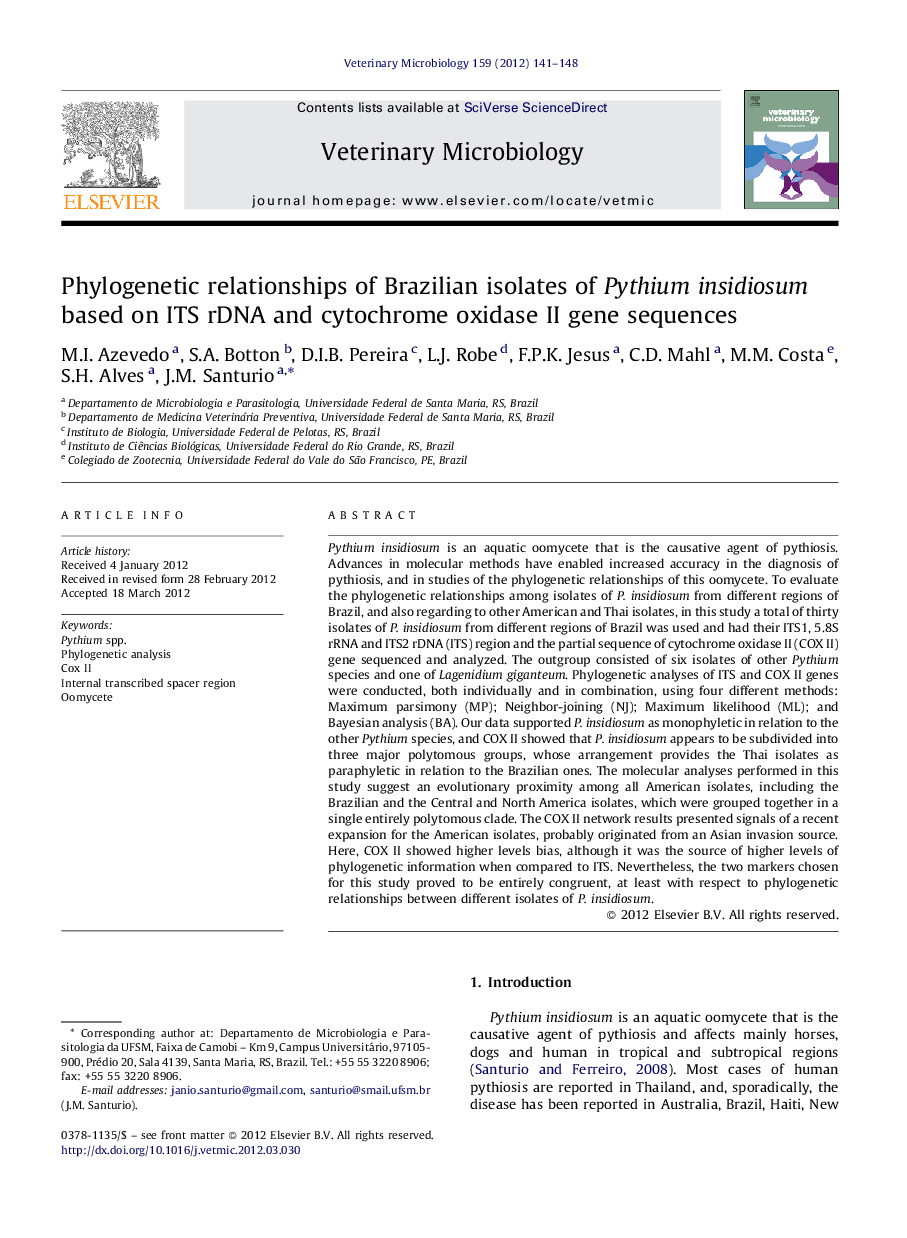| Article ID | Journal | Published Year | Pages | File Type |
|---|---|---|---|---|
| 2467070 | Veterinary Microbiology | 2012 | 8 Pages |
Pythium insidiosum is an aquatic oomycete that is the causative agent of pythiosis. Advances in molecular methods have enabled increased accuracy in the diagnosis of pythiosis, and in studies of the phylogenetic relationships of this oomycete. To evaluate the phylogenetic relationships among isolates of P. insidiosum from different regions of Brazil, and also regarding to other American and Thai isolates, in this study a total of thirty isolates of P. insidiosum from different regions of Brazil was used and had their ITS1, 5.8S rRNA and ITS2 rDNA (ITS) region and the partial sequence of cytochrome oxidase II (COX II) gene sequenced and analyzed. The outgroup consisted of six isolates of other Pythium species and one of Lagenidium giganteum. Phylogenetic analyses of ITS and COX II genes were conducted, both individually and in combination, using four different methods: Maximum parsimony (MP); Neighbor-joining (NJ); Maximum likelihood (ML); and Bayesian analysis (BA). Our data supported P. insidiosum as monophyletic in relation to the other Pythium species, and COX II showed that P. insidiosum appears to be subdivided into three major polytomous groups, whose arrangement provides the Thai isolates as paraphyletic in relation to the Brazilian ones. The molecular analyses performed in this study suggest an evolutionary proximity among all American isolates, including the Brazilian and the Central and North America isolates, which were grouped together in a single entirely polytomous clade. The COX II network results presented signals of a recent expansion for the American isolates, probably originated from an Asian invasion source. Here, COX II showed higher levels bias, although it was the source of higher levels of phylogenetic information when compared to ITS. Nevertheless, the two markers chosen for this study proved to be entirely congruent, at least with respect to phylogenetic relationships between different isolates of P. insidiosum.
